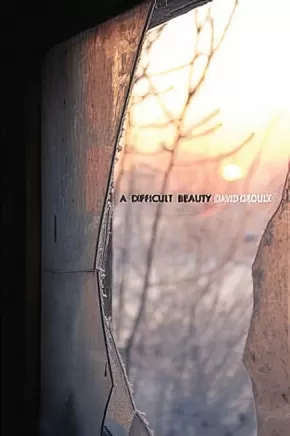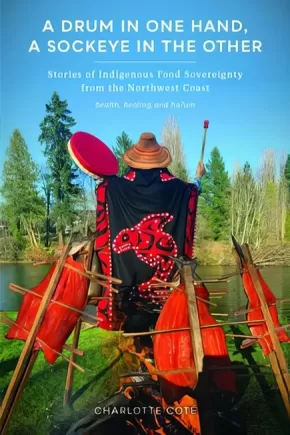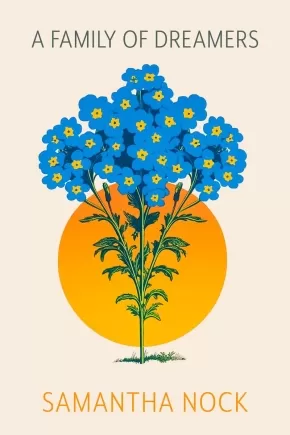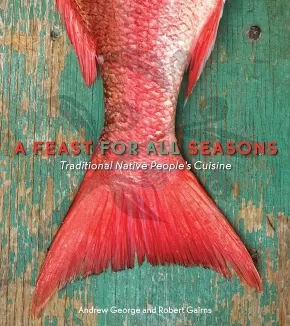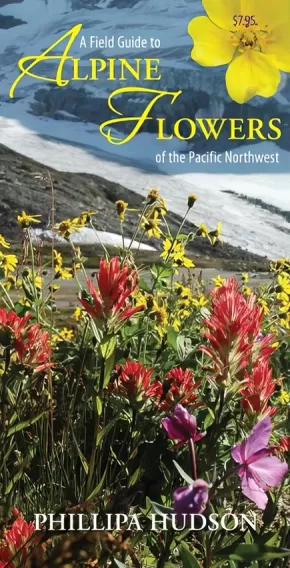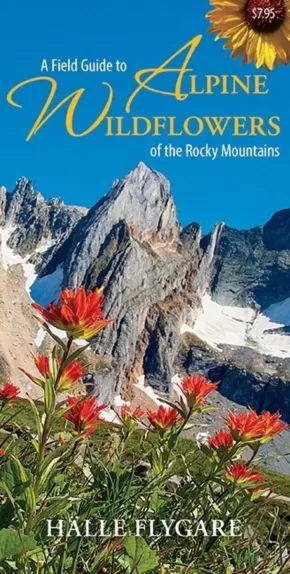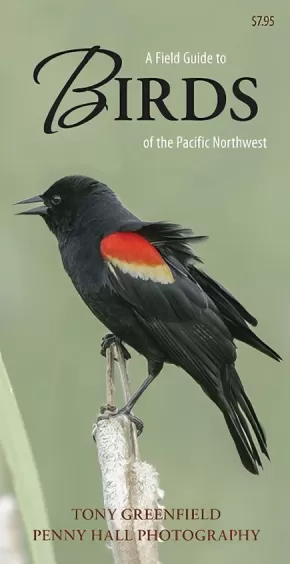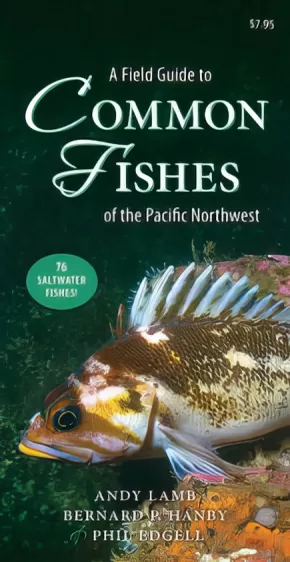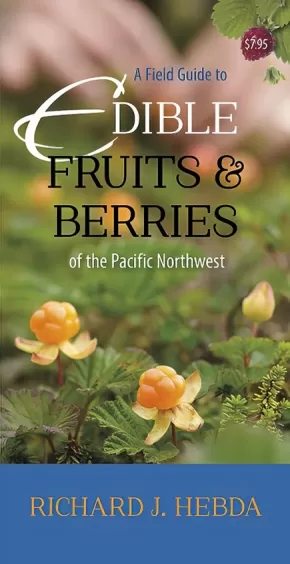
English
Books (12)
A Difficult Beauty
$17.00
Format:
Paperback
Text Content Territories:
Indigenous Canadian;
ISBN / Barcode: 9781894987578
Synopsis:
Synopsis:
David Groulx’s latest collection offers his readers a handful of poems as cutting and brilliant as glass shards, offering glimpses of the anger, pain and lost beauties of his ancestors. These poems cut deep with their clear-eyed honesty, their stripped away pain and suffering. A subtle weaving of black humour and fleeting touches of beauty, as well at the careful craftsmanship of the writing make these poems iconic. This is a collection that should not be missed.
Reviews
"This collection of poetry is a passionate snapshot of poignant aspects of life on the rez depicted in simple scenes that are propelled forward with a sparse economy of language. It is little wonder that Groulx has won awards for his poetry and it has appeared globally in over one hundred periodicals." - Canadian Literature
A Digital Bundle: Protecting and Promoting Indigenous Knowledge Online
$29.95
Format:
Paperback
Text Content Territories:
Indigenous Canadian;
Grade Levels: University/College;
ISBN / Barcode: 9780889775510
Synopsis:
Synopsis:
An essential contribution to Internet activism and a must read for Indigenous educators, A Digital Bundle frames digital technology as an important tool for self-determination and idea sharing, ultimately contributing to Indigenous resurgence and nation building.
By defining Indigenous Knowledge online in terms of “digital bundles,” Jennifer Wemigwans elevates both cultural protocol and cultural responsibilities, grounds online projects within Indigenous philosophical paradigms, and highlights new possibilities for both the Internet and Indigenous communities.
Reviews
"This must-read book based on extensive research, dialogue, and consultation with Indigenous Elders, leaders, artists, and academics helps to address the new risks, ethical questions, and challenges for how Indigenous Knowledge can be accessed, appropriately used, published, and transformed using multiple communication and digital forms. It offers the protocols, stories, advice, practices, and wisdom from Indigenous Knowledge holders to help address the challenges and questions about how Indigenous Knowledge can live now and in the future in its divergent forms with new forms of technology. " — Marie Battiste, author of Decolonizing Education and founder of the Aboriginal Education Research Centre, University of Saskatchewan
"An invaluable case-study in how to ethically write and conduct a research project in Indigenous studies. .. this book is a must-read for any researcher writing on Indigenous topics. " —Transmotion
"A necessary intervention into the conversations and classifications of the digital age happening all too often without Indigenous perspective or contribution. " —Journal of Native Studies
"[A] welcome intervention into discussions of the digital age, where the rich possibilities and ethical practices coming from Indigenous scholars and cultural activists such as Wemigwans are sorely needed. This important new book is a kind of guide for scholars, activists, media makers, and visionaries as to how we might collectively imagine Indigenous cultural futures with mindful use of digital technologies across the globe. " — Faye Ginsburg, director of the Center for Media, Culture and History, New York University
Additional Information
224 pages | 6.00" x 9.00"
A Drum in One Hand, a Sockeye in the Other: Stories of Indigenous Food Sovereignty from the Northwest Coast
$41.00
Format:
Paperback
Text Content Territories:
Indigenous Canadian; First Nations; Nuu-chah-nulth (Nootka); Tseshaht First Nation;
Grade Levels: 12; University/College;
ISBN / Barcode: 9780295749525
Synopsis:
Synopsis:
In the dense rainforest of the west coast of Vancouver Island, the Somass River (c̓uumaʕas) brings sockeye salmon (miʕaat) into the Nuu-chah-nulth community of Tseshaht. C̓uumaʕas and miʕaat are central to the sacred food practices that have been a crucial part of the Indigenous community’s efforts to enact food sovereignty, decolonize their diet, and preserve their ancestral knowledge.
In A Drum in One Hand, a Sockeye in the Other, Charlotte Coté shares contemporary Nuu-chah-nulth practices of traditional food revitalization in the context of broader efforts to re-Indigenize contemporary diets on the Northwest Coast. Coté offers evocative stories of her Tseshaht community’s and her own work to revitalize relationships to haʔum (traditional food) as a way to nurture health and wellness. As Indigenous peoples continue to face food insecurity due to ongoing inequality, environmental degradation, and the Westernization of traditional diets, Coté foregrounds healing and cultural sustenance via everyday enactments of food sovereignty: berry picking, salmon fishing, and building a community garden on reclaimed residential school grounds. This book is for everyone concerned about the major role food plays in physical, emotional, and spiritual wellness.
Reviews
"A powerful philosophy of food sovereignty. Coté successfully navigates myriad scholarly and nonscholarly voices, telling a compelling comprehensive story that helps us understand the practices and policies needed to make change in our food systems." — Kyle Whyte, Michigan State University
"Adeptly uses a deep storytelling method, including both lived experience and critical analysis of history and theory, to examine experiences and transformations of Indigenous foodways." — Hannah Wittman, University of British Columbia
"I am so grateful for Charlotte Cote’s A Drum in One Hand, a Sockeye in the Other, which creates a path into the living foodways and thoughtways of her people. Her warm, storytelling voice and sharing of collective knowledge embody the generous spirit of a feast, and this book itself, is a feast." — Robin Wall Kimmerer (Potawatomi), SUNY Environmental Science and Forestry
Additional Information
208 pages | 6.00" x 9.00" | 17 b&w illustrations | 2 maps | Paperback
A Family of Dreamers
$18.95
Format:
Paperback
Text Content Territories:
Indigenous Canadian; First Nations; Cree (Nehiyawak); Métis;
Reading Level: N/A
ISBN / Barcode: 9781772015478
Synopsis:
Synopsis:
In this debut poetry collection, Samantha Nock redefines where and what “home” is.
A Family of Dreamers delves into the complexities of growing up in rural northeast British Columbia and the love and grief that blooms there. In this debut collection, Samantha Nock weaves together threads of fat liberation, desirability politics, and heartbreak while working through her existence as a young Indigenous woman coming of age in the city. The result is a love song to northern cuzzins, dive bars, and growing up.
Additional Information
101 pages | 5.98" x 9.01" | Paperback
A Feast for All Seasons: Traditional Native Peoples' Cuisine
$24.95
Format:
Paperback
Text Content Territories:
Indigenous Canadian;
ISBN / Barcode: 9781551523682
Synopsis:
Synopsis:
Traditional North American Native peoples' cuisine has existed for centuries, but its central tenet of respecting nature and its bounty have never been as timely as they are now. Andrew George, of the Wet'suwet'en Nation in Canada, is a well-respected aboriginal chef and instructor who has spent the last twenty-five years promoting the traditions of First Nations food. In A Feast for All Seasons, written with Robert Gairns, he has compiled aboriginal recipes that feature ingredients from the land, sea, and sky, elements of an enduring cuisine that illustrate respect for the environment and its creatures, and acknowledgment of the spiritual power that food can have in our lives.
The 120 recipes include delectable, make-at home dishes such as Salmon and Fiddlehead Stirfry, Stuffed Wild Duck, Barbecued Oysters, Pan-fried Rabbit with Wild Cranberry Glaze, Clam Fritters, and Wild Blueberry Cookies. The book also features recipes with exotic ingredients that provide a fascinating glimpse into the history of Native cuisine: Moose Chili, Boiled Porcupine, Smoked Beaver Meat, and Braised Bear.
This unique cookbook pays homage to an enduring food culture--grounded in tradition and the power of nature--that transcends the test of time.
Reviews
"A lovely cookbook ... A great gift for anyone interested in Canadian food history, First Nations or locavore diets."— Calgary Herald
"I loved that some of the recipes were simple, like the three-ingredient Baked Sweet Potato with Roasted Hazelnuts, a great accompaniment to wild game like the simple Roast Venison ... A Feast for All Seasons gives a glimpse into the purpose of the feast that brings people together." — St'at'imc Runner
Additional Information
152 pages | 8.00" x 9.00" | Paperback
A Field Guide to Alpine Flowers of the Pacific Northwest
$7.95
Format:
Pamphlet
Reading Level: N/A
ISBN / Barcode: 9781550175400
Synopsis:
Synopsis:
This portable 8-fold guide is the perfect companion to Phillipa Hudson's easy-to-use Coastal Flowers of the Pacific Northwest, and features 112 spectacular photos of flowers found from the mid to alpine elevations on Vancouver Island and the Coast Mountains of the Pacific Northwest. Organized into a two-sided colour coded chart with a ruler printed on the back cover, this handy guide will aid in the quick identification of almost any flower one is likely to encounter in the higher realms of the Pacific Northwest, from exquisite yellow glacier lilies to elusive alpine pussy-toes. Labelled with both English and Latin names with descriptions of each species' distribution range and average plant height and flower size, this full-colour pamphlet is useful to budding botanists as well as more accomplished flower enthusiasts.
Additional Information
2 pages | 4.62" x 8.42" | 112+ Colour Photos | Pamphlet
A Field Guide to Alpine Wildflowers of the Rocky Mountains
$7.95
Format:
Pamphlet
Reading Level: N/A
ISBN / Barcode: 9781550175530
Synopsis:
Synopsis:
With gorgeous full-colour photos arranged in an easy-to-use colour-coded chart for quick identification, this pocket-sized laminated pamphlet is perfect for taking along on walks and hikes through the Rocky Mountains, from BC and Alberta to New Mexico. Supplying English and Latin names, the distribution range of each species and average plant height and flower size, Halle Flygare shares his knowledge and pictures of flora gained through over 30 years as a photographer, park warden and guide in the Rocky Mountains.
Additional Information
2 pages | 4.50" x 9.00" | 112 Colour Photographs
A Field Guide to Birds of the Pacific Northwest
$7.95
Artists:
Format:
Pamphlet
ISBN / Barcode: 9781550176056
Synopsis:
Synopsis:
Do you know a tanager from a towhee? A goatsucker from a grosbeak? Here, after much demand, is a waterproof, portable 8-fold guide featuring 112 photos of the common birds found in coastal areas of Oregon, Washington, British Columbia and Alaska. Each species is labelled with common name, size, distribution range and favoured habitat. This full-colour pamphlet is useful to anyone who has an interest in taking up birdwatching, or just wants to figure out what's flitting about the birdfeeder.
Additional Information
2 pages | 37.00" x 9.00" | field guide with 112 colour photographs
A Field Guide to Coastal Flowers of the Pacific Northwest
$8.95
Format:
Pamphlet
Reading Level: N/A
ISBN / Barcode: 9781550174731
Synopsis:
Synopsis:
With gorgeous full-colour photos arranged in an easy-to-use colour coded chart for quick identification, the pocket-sized format is perfect for taking along on walks and hikes through both the Pacific Northwest countryside as well as the urban wilds of West Coast cities. Supplying English and Latin names, the distribution range of each species and average plant height and flower size, Phillipa Hudson shares her knowledge of coast flora gained through over 30 years as an active amateur botanist.
A Field Guide to Common Fishes to the Pacific Northwest
$7.95
Artists:
Format:
Pamphlet
Reading Level: N/A
ISBN / Barcode: 9781550177121
Synopsis:
Synopsis:
The waters of the Pacific Northwest are home to some of the most unique and diverse marine creatures in the world, including rockfishes, greenlings and, of course, salmon. This full-colour brochure is packed with information on seventy-eight "must-have" common fishes of the Pacific Northwest. A Field Guide to Common Fish of the Pacific Northwest provides a succinct rundown on a huge variety of our fishy neighbours, and is an ideal guide for fishermen, divers and anyone interested in the marine life that fills our surrounding waters.
A Field Guide to Crabs of the Pacific Northwest
$7.95
Format:
Pamphlet
Reading Level: N/A
ISBN / Barcode: 9781550179095
Synopsis:
Synopsis:
Crabs can be found in abundance along the shorelines from Oregon to BC, burrowed under sand, soil and rocks. Keep this portable field guide handy on trips to the seashore to identify over forty species of crabs and hermit crabs in all shapes and sizes. Discover the differences between the Butterfly Crab and the Puget Sound King Crab and learn how to distinguish between male and female crabs. With full-colour photographs featuring both dorsal and ventral views, and accompanied by descriptive text for easy identification, A Field Guide to Crabs of the Pacific Northwest is an ideal companion for curious beachgoers of all ages.
Additional Information
2 pages | 37.00" x 9.00"
A Field Guide to Edible Fruits & Berries of the Pacific Northwest
$8.95
Format:
Pamphlet
ISBN / Barcode: 9781550176469
Synopsis:
Synopsis:
If wild berry foragers followed vague advice such as "berries of red and you'll soon be dead" or "berries of blue will do harm to you" imagine how many of nature's delicacies would be passed by! On the other hand, for anyone who has thought twice before popping that delicious-looking morsel into their mouth, the reality of poisonous berries growing in the wild is reason enough to be berry aware.
With a basketful of information presented on a two-sided, lightweight and pocket-sized pamphlet, A Field Guide to Edible Fruits and Berries of the Pacific Northwest is the perfect resource for wild fruit- and berry-lovers of all ages, whether on a short walk in the woods or a backcountry hiking trip. In addition to more commonly identified specimens such as strawberries, blueberries and blackberries, explore the delicious possibilities of evergreen huckleberries, cloudberries and crowberries, and learn how to tell the edible lingonberry from the poisonous baneberry.
Each entry is illustrated with a colour photograph and accompanied by a brief description and seasonal availability to help identify more than forty kinds of fruits and berries found in the wild, along with information on how best to prepare and preserve the edible ones.
Additional Information
2 pages | 37.00" x 9.00" | field guide with 50 colour photographs
Kids Books (3)
A Day With Hu'ul
$19.95
Artists:
Format:
Hardcover
Text Content Territories:
Indigenous American; Native American; Tohono O'oodam;
Grade Levels: Preschool; Kindergarten;
ISBN / Barcode: 9798992176308
Synopsis:
Synopsis:
Grandmother, Why do we do the things we do?
How a young girl is raised by her grandmother on the Tohono O'odham Indian Reservation. The book denotes various aspects of O'odham himdag (culture) and begins with waking up in the morning and then preparing for the day and engaging in several different responsibilities. Various daily chores and activities such as preparation of different food, basket weaving, pottery making, household chores and cultural undertakings are highlighted.
Educator & Series Information
Recommended for ages 3 to 5.
This book includes many O'odham words, but it is not a dual-language book. A glossary is included. O'odham is a Native American language spoken by several tribes in the American Southwest and Northern Sonoran Mexico.
This book is part of the Tohono O'odham series.
Subjects / Themes: Daily Life, Home, Family, Community, Culture
Additional Information
48 pages | 11.00" x 9.00" | colour illustrations | Hardcover
A Different Game (2 In Stock) - ON SALE
$6.36 $7.95
Format:
Paperback
Text Content Territories:
Indigenous Canadian; First Nations;
ISBN / Barcode: 9781554691692
Synopsis:
Synopsis:
In this sequel to Murphy and Mousetrap, Murphy and his three friends, Danny, Jeff and Albert, are making the transition from the tribal elementary school to the community middle school. They are all trying out for the middle school's soccer team, and they're pretty confident that The Formidable Four will all make the team. But once the tryouts begin, Albert, the tribal-school superstar, plays like a second stringer. Murphy's new friend, Molly, is determined to help the boys find out what's wrong with Albert, but when they discover the truth, they realize that Albert is playing a whole different game.
Reviews
"A novel of courage and achievement told from the point of view of four native youths who must learn to cope with life off the reserve and their friend's illness…Many life lessons are taught with meaningful thematic messages, values and spirit…Highly recommended for primary/junior male readers both for recreational reading and for literature circles or discussion groups." — Resource Links, October 2010
Educator & Series Information
This book is part of the Orca Young Readers series, which are award-winning, bestselling chapter books for ages 8–11. Titles in this series include historical and contemporary stories with age-appropriate plots.
Additional Information
136 pages | 5.00" x 7.50"
A Family Tree
$24.99
Format:
Hardcover
Text Content Territories:
Indigenous American; Native American; Anishinaabeg; Ojibwe (Chippewa);
ISBN / Barcode: 9780063242463
Synopsis:
Synopsis:
A modern-day twist to The Giving Tree, this book chronicles the changes brought upon a beloved family tree that must be uprooted and planted on new land. This debut picture book by Staci Lola Drouillard (Grand Portage Band of Ojibwe descendant) celebrates resiliency, family bonds, and our deep connection to and responsibility for nature.
Grandma’s garden was not just any garden. It was where a spruce tree, only as tall as baby Francis, reached her roots into the soil and stretched her branches toward the sky. Here, on the shore of Gichigaming, is where Francis and the sapling felt right at home.
But when Grandma and Grandpa decide to move away, Francis wants to take the tree with them—can they?
Brimming with tenderness, this story from Staci Lola Drouillard (Grand Portage Band of Ojibwe descendant), with illustrations by Kate Gardiner (Chaubunagungamaug band of Nipmuck Indians), traces the journey of one family, and a little tree, as they adapt to change by drawing on the strength of their roots.
Reviews
"Drouillard, a Grand Portage band of Ojibwe descendant, and Gardiner, a member of the Chaubunagungamaug band of Nipmuck Indians, expertly weave together Francis and Gawaandagoonce’s grief and growth, conveying the heartbreak and resilience that often accompany transition while honoring Ojibwe values and language. A poignant illustration of how our roots keep us grounded amid change." — Kirkus Reviews
Educator Information
Recommended for ages 4 to 8.
Additional Information
40 pages | 10.00" x 10.00" | Hardcover

